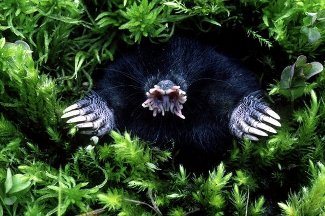Whaddya mean ugly?

While academic studies on the nature of beauty abound, this article in the New York Times takes note of some recent efforts by academics to uncover the nature of ugly. The NYT‘s Natalie Angier writes:
Let’s not pussyfoot. They are, by our standards, ugly animals—maybe cute ugly, more often just ugly ugly. And though the science of ugliness lags behind investigations into the evolution of beauty and the metrics of a supermodel’s face, a few researchers are taking a crack at understanding why we find certain animals unsightly even when they don’t threaten us with venom or compete for our food.
Citing researchers like neuroscientist Nancy Kanwishwer, and evolutionary biologist Geoffery Miller, Angier shows how most of our ideas about the aesthetic appeal of animals are based on how closely their physical appearance conforms to, or deviates from, the physical appearance of healthy, attractive, human beings—an idea which cultural critic Wendy Steiner (also quoted in the NYT article) both draws from and complicates with her account of changing perceptions of beauty in her books, Venus in Exile: The Rejection of Beauty in Twentieth-Century Art, and The Real Real Thing: The Model in the Mirror of Art, the latter of which will be published later this fall.
In Venus in Exile Steiner documents modernism’s rejection of conventional, representational forms of beauty in favor of the “separate sphere” of the abstract and surreal, and in The Real Real Thing, the convergence of these worlds as new media blurs the line between the virtual and the real—a convergence which Steiner argues offers new ways of thinking about beauty. But will it open up new doors for the star-nosed mole? Angier writes:
Classical beauty is easy, but a taste for the difficult, the unconventional, the ugly, has often been seen as a mark of sophistication, a passport into the rarefied world of the artistic vanguard. “Beauty can be present by its violation,” Dr. Steiner said, and the pinwheel appendages of the star-nosed mole are the rosy fingers of dawn.
Read the full article at the NYT website.